Repair and restoration of veneered doors

Over time, even luxurious doors lose their original appearance: the coating peels off, microcracks appear, areas with chipped wood, and the like. However, such destruction of the door leaf is not a reason to replace the old structure with a new one: such a door can still be repaired. It should be noted that it is possible to restore any canvas with your own hands, and veneered doors are no exception. Restoration of veneered products is a real art, therefore, you should not be imprudent about this event. The most important thing is to remember that an oversight will only worsen the problem.
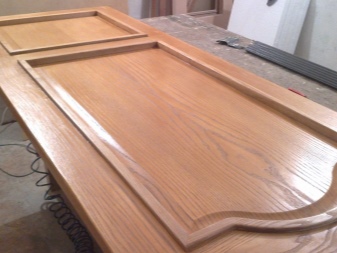

Tools and materials
To repair or restore an old door, you will need the following tools and materials:
- a universal screwdriver or a screwdriver - to remove and mount the door leaf in the opening, to install and adjust handles and awnings;
- construction trowel, office knife - to clean the surface from the old coating (varnish, paint);
- hacksaw or jigsaw - for cutting openings in the door leaf, if the work involves the insertion of glass or plywood sheet;
- iron;
- PVA glue;
- pencil;
- water-dispersed paint based on polyacrylate;
- wax;
- sandpaper (or better, a grinder) - for processing edges and surfaces;
- brushes (flat), rollers (velor, with a small nap or foam rubber), sponges, rags - for impregnation and staining;
- wallpaper nails, screws;
- laths and glazing beads made of wood - if there is a need to fix plywood or glass inserts in the door leaf.




The material for restoration work is selected individually for a specific situation.
Problems and their elimination
Before proceeding with the restoration of an entrance or interior door covered with veneer obtained from various types of wood: oak, birch, maple, cherry, beech, walnut, wenge, and so on, it is necessary to carefully examine it and establish all defects. Since the repair technology, tools and materials that are required depend on their type. In this regard, when examining a box or canvas, they look at scratches, swellings, cracks and the level of depreciation of the coating.
Severe damage will need to be repaired with a specialized veneer paint. It is most comfortable to repair the door leaf after dismantling it from the sheds. Damage that is not too severe can be removed without removing the door.
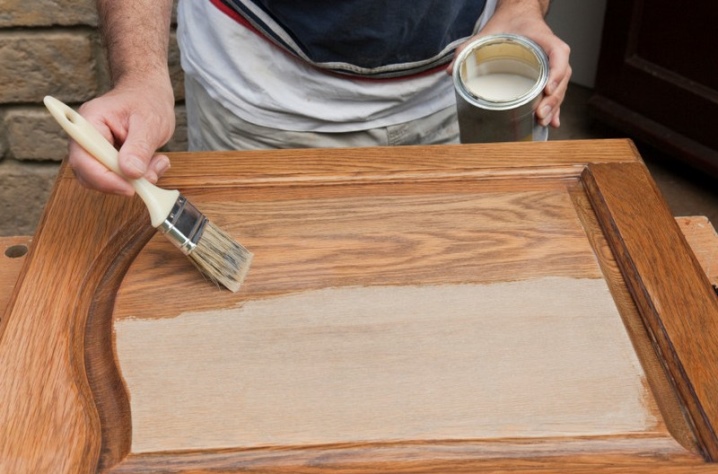
Bulging material
Swelling of veneered doors occurs because the sheets of cladding material were unsatisfactorily and illiterately glued.
In addition, this can happen when the structure is used in conditions of high humidity, the door leaf was washed with a very wet rag, as a result of a "flood" in the apartment, the veneer came off and swelled.


There are 2 productive ways to remove such a flaw.
- Ironing. Before starting to restore a veneered door in this way, it is necessary to wet a piece of material, squeeze it out thoroughly and place it on the swollen area for about 10-15 minutes. Moisture will make the veneer layer more pliable. After that, the iron should be heated, but not very much (lowest or medium temperature). All that remains is to iron the swollen canvas.
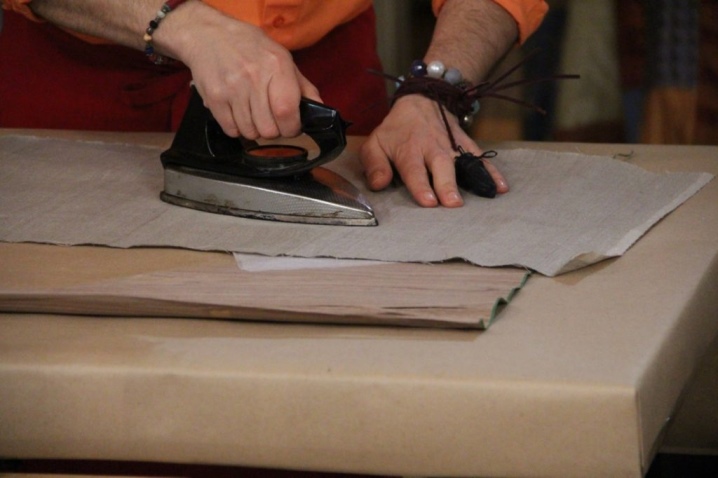
- Gluing... When the first method did not help, then you will need to glue the cladding layer. To repair a veneered door using a similar method, you need to take PVA glue and an ordinary medical syringe, through which it is easier to inject an adhesive composition under the cladding. After the required amount of adhesive is introduced under the veneer layer, it is required to press down well the coating and iron it on top with a dry cloth so that the adhesive is equally dispersed. The area to be glued must be pressed down with a load for at least a few hours, and ideally for the whole night or day. Also, bubbles are eliminated at the ends of the product. Subsequently, the door can be mounted in place.
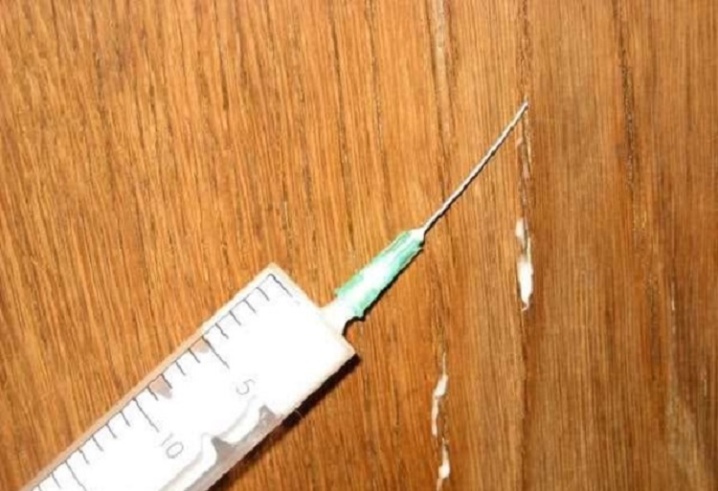
Veneer sheets are not very thick, because glued with PVA glue without any problems.
It is suitable for restoring natural and unnatural coatings.
When the veneer has just begun to swell and come off in the areas where the sheets are joined, it must be fixed immediately with an iron or an adhesive, otherwise the “bubble” will subsequently become even larger.

Minor defects
If you notice minor damage to your own door, you really should not be upset. The restoration of veneer with such minor defects as scratches and chips is carried out using such methods.
For applying a special layer of wax coating small damage should be cleaned. Only work with tools and materials is required with extreme caution. In the process of eliminating small cracks and abrasions, damage to the canvas can be done. It happens that the owners are overly diligent in using sandpaper and the varnished surface becomes unpresentable.
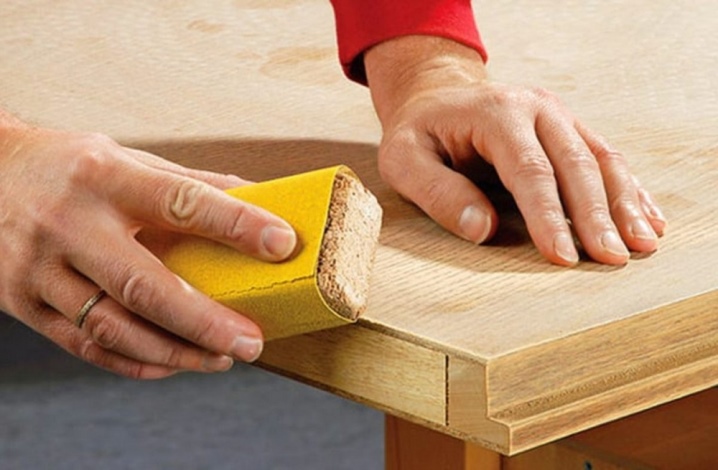
After that, thoroughly clean the door from dirt and dust. Each section of the entire door leaf must be thoroughly degreased. This will allow the wax to be applied at the proper level, and it will hold for quite a long time. It is necessary to heat the wax and carefully repair the scratches with it.
And when everything is done properly, the end result will be amazing. Damage will disappear without a trace.


A filling wax stick is also suitable for surface regeneration. It will be possible to update veneered doors with a specialized pencil only if you use very little material. You need to take a small piece of wax and wrinkle it for a while. From heating it will acquire the necessary texture, and you can force it to be absorbed into the surface of the coating by rubbing. Remove excess with a rag.


On a note! If the restoration of the veneered door was carried out with wax (it does not matter, with a pencil or liquid), this surface cannot be painted or varnished.
Since the wax will sooner or later begin to crumble, the product takes on a disgusting look.

Serious damage
Restoration of veneer-faced doors, in the presence of strong chips, holes and broken off areas, involves a larger intervention, and sometimes the need to completely change the cladding. In order not to make a complete replacement of the door leaf cover, you can make a patch from a material similar in color. To restore doors with strong dents, the following measures must be taken.
- Measure the defective area... Mark it with a regular rectangle. Record the information received.
- Cut off the cover from the door leaf, clean the base and treat it with special compounds. Fill the groove with wood filler, sand and prime the surface.
- Align the patch with the hole... After a precise fit, spread the two components with adhesive and connect precisely. Fill cracks with extruded glue, remove excess.
- Irregularities at the edges should be smoothed with fine-grain sandpaper.... To avoid visible traces of processing, it is necessary to cover the edges with a water-dispersed paint based on polyacrylate. Grab a few centimeters from 2 sides of the joints so that the veneer layer is absolutely even.
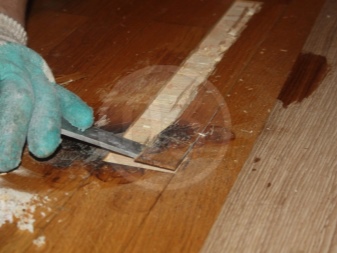

Final works
A self-restored veneered door is often covered with a 10-20% alcohol solution of shellac to add shine or colorless varnish. There is no significant difference between these funds. In addition, only a knowledgeable expert is able to correctly establish which cladding was treated with varnish prepared from shellac, and which one was colorless.
However, sometimes home craftsmen decide to paint the door leaf. Before refreshing the product in this way, eliminate all damage on its surface.


After that, the canvas is subjected to processing with a specialized impregnation and only after completing these measures is it painted. In order for the paint to lay down evenly and not leave smudges, it is advisable to place the canvas lying down.
The following paints can be practiced to paint veneered doors:
- enamels GF (glyphtal paints);
- polyurethane-based;
- water-dispersive.


Enamel NTs-132 (nitro-paint is a popular name) is not used for such works: thanks to it, the surface covered with veneer can become covered with terrible spots. After waiting for the paint to dry completely (as a rule, it takes from one to two days), the door leaf is placed on the awnings. It is also recommended to reconstruct the box, otherwise it will disfigure the appearance of the structure.

Care Tips
In order for a door leaf, lined with veneer, to last as long as possible and look like new, it must be properly looked after. It is forbidden to clean the veneer with abrasive materials, otherwise small scratches will remain on the coating, it will rapidly lose its gloss. It is undesirable to install doors, faced with veneer, in such a way that direct sunlight is always falling on them. From this, the cladding will begin to fade, you will have to update the veneered doors quite often: apply varnish or paint.
It is allowed to wipe the veneer with a damp cloth, only it should be carefully wrung out. Washing in the literal sense of the word with water, it is prohibited to use the structure at high humidity levels. You also need to be careful when washing the floors, because the bottom of the door frame and sash will suffer from this.
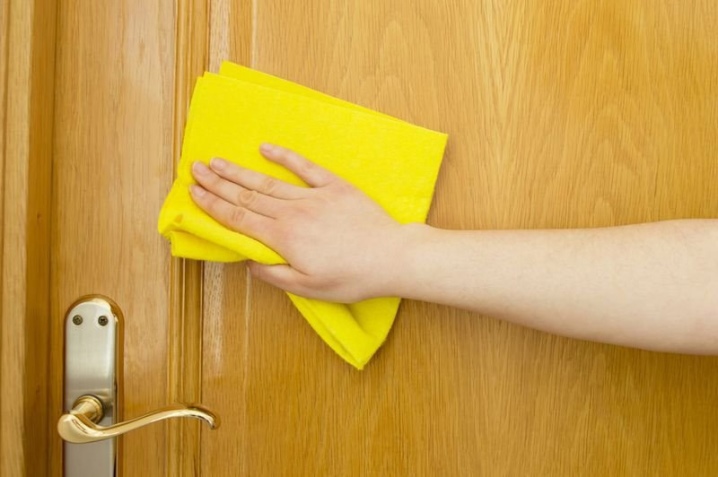
From time to time, to give gloss, it is worth carefully polishing the structure (for example, with a polish) on a wax base. It repels dust and hides minor damage.
With proper care, veneered doors will serve for more than a dozen years. Only in this case, they cannot protect themselves from minor scratches and defects. Therefore, it is necessary to have a notion of how to reconstruct a veneered door with your own hands. This can be done simply through the available materials and basic tools.
For the restoration of veneered doors, see below.













The comment was sent successfully.